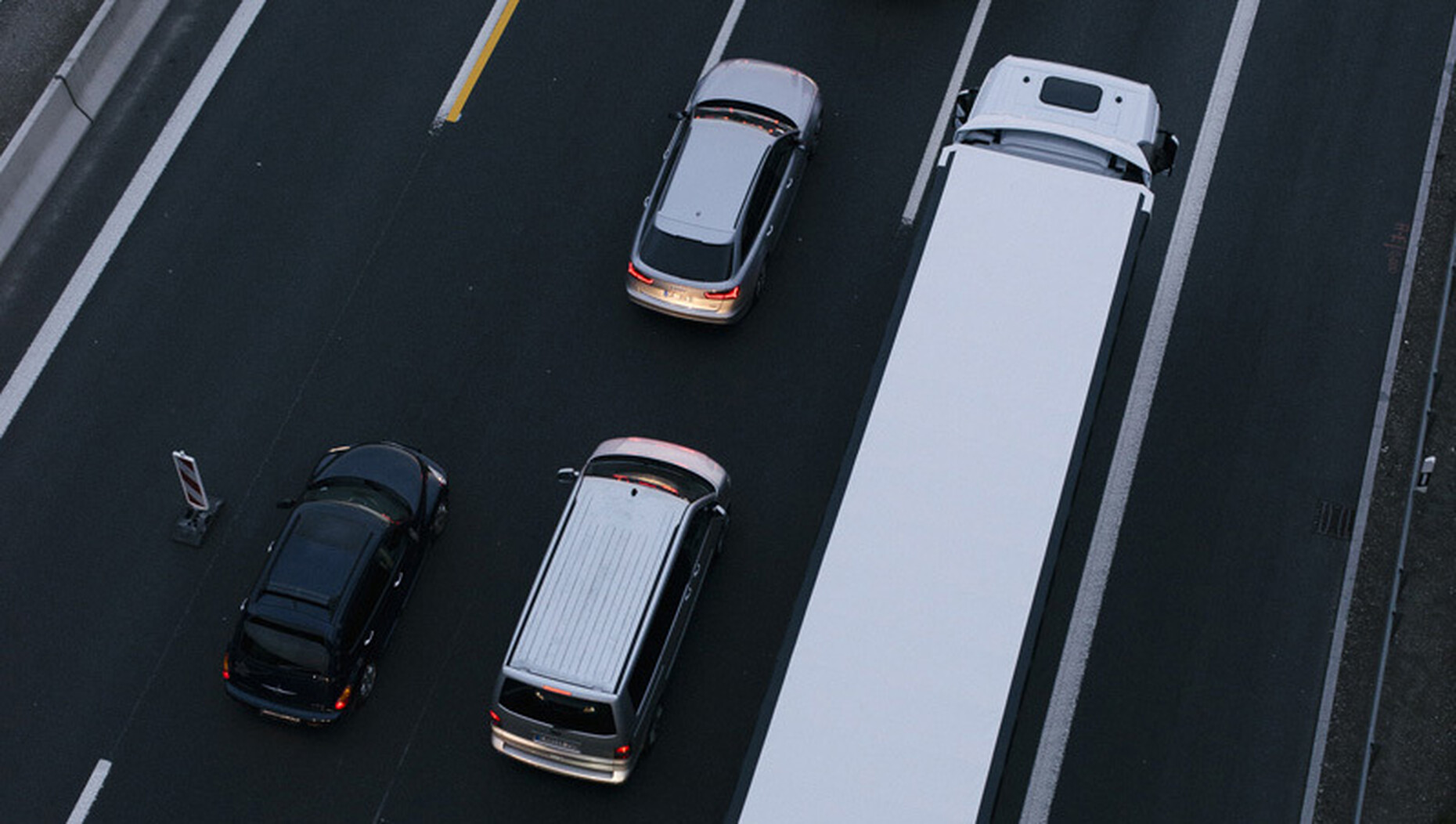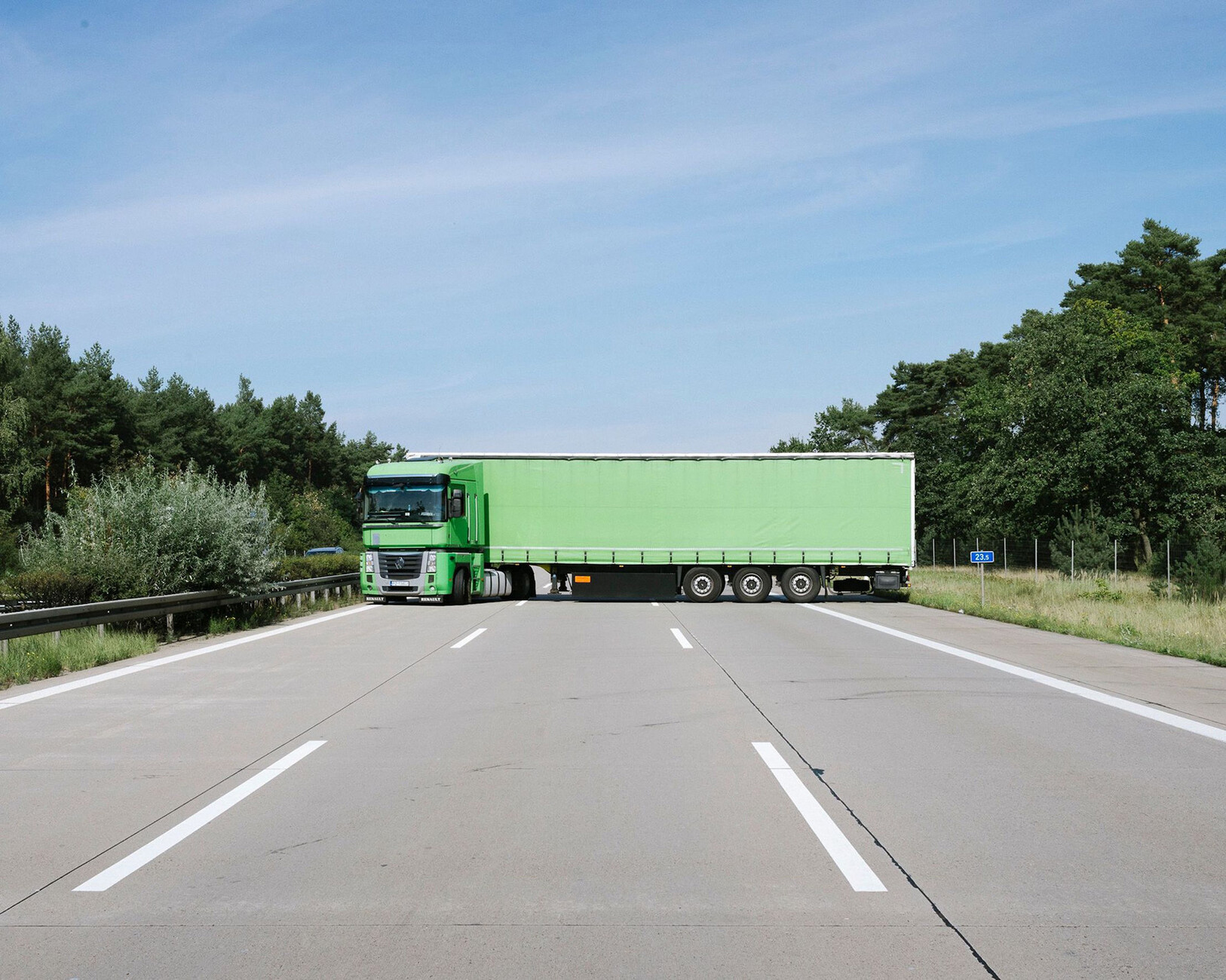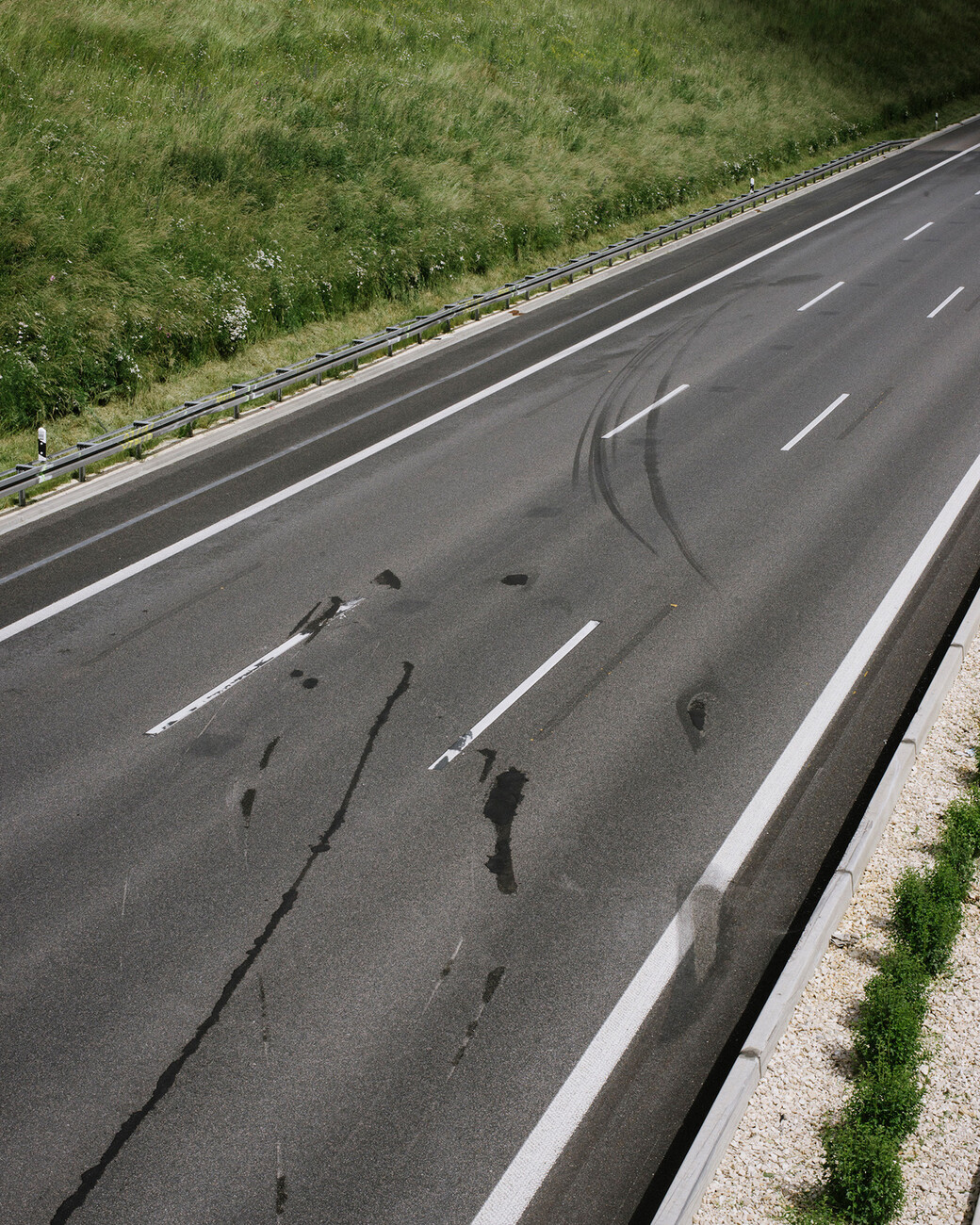Jörg Brüggemann – Autobahn
At first sight they are surprisingly attractive shots that photographer Jörg Brüggemann collected over a period of five years throughout Germany: Dark forests or broad, green ranges of hills, people and cars in bright sunshine. His shots breathe vastness and depict the interstates as being strangely peaceful. However, something threatening then slips in. Here skid marks run diagonally across the asphalt, there a stranded grass-green truck straddles all the lanes. On a dusty track next to an immense concrete noise barrier a young family plays as if in a post-apocalyptic nightmare. The people standing in the sunshine are on the emergency lane that must be kept free of traffic and at second glance you feel tempted to ask: How many injured? Behind three tranquil overgrown houses on a steep street a concrete stump rises up. We don’t see what supports this stump, but we have an inkling that it must be something immense that holds up this tall solid concrete structure so as to stave off the constantly threatening catastrophe.
It is this suggestive force that accounts for the strong fascination of this small, intense book. All that is written on the deep blue cover is the word "Autobahn" in white lettering, and this is reassuring like the announcement of a nearby service area and yet the book is more like a film. Brüggemann easily succeeds in maintaining the tension over the course of the 46 images. They are still-life shots in which this German myth takes on a tranquil aspect. There is no denying that the autobahn is the German national construction of the 20th century. Covering a total of 13,100 kilometers it winds its way all over Germany and not only stands for vacations but equally for the firm belief in future and progress, and for the Third Reich, for road casualties, never-ending tailbacks, and for that oh so individual yet unecological and uneconomic lifestyle of the combustion-engine years. "I have taken lots of photographs in distant countries," relates Brüggemann, and then wanted to devote himself to his native country. He started on the highway and it was not until later that he realized that in doing so he was also returning to his own childhood.
Brüggemann comes from the Ruhr region; as a child he played in the shadow of the noise barriers along the A42, he says. And in the summer the family traveled by car to Austria. He quite literally spent months on the road for this photography project. The interstates and the service stations also infused him with a sense of home, but above all a feeling that things cannot stay like this much longer. He does not deny that his images exude a sense of impending danger. "I wanted to combine all the topic that are connected with the interstate. Naturally, that also includes accidents and death." The order of images is not accidental: The photo of the young family near the noise barrier is followed by the image with the skid marks and then one depicting a cemetery that backs directly onto an autobahn. After this comes a picture featuring a magnificent green meadow dissected by a heroic-looking backlit highway bridge.
Asked how he considers the interstates today on the back of five years of intensive photographic exploration work Brüggemann appears to be torn. He sees the myth confirmed. Simultaneously, he could not help but feel that things could not stay this way much longer. "The autobahn as we know it with petrol and combustion engines will perhaps or hopefully soon look different." Even though it is not clear what will follow it. They couldn’t just be torn down. The German autobahn is ‘Too Big to Fail‘. That said, maybe soon all that will drive on them are electric cars, softly humming and driven automatically with sleeping, relaxed passengers on board and not causing any accidents. Now is that an attractive utopia or does it sound threatening?
Jörg Brüggemann - Autobahn
Hartmann Books
26,8 × 32 cm
96 pages, 46 ill.
Design: HelloMe, Berlin
Hardcover with linen cover and embossed lettering
ISBN 978-3-96070-052-4
38 Euro
Current exhibition:
Jörg Brüggemann - how much longer?
Until 24.05.2021
ZEPHYR - Space for Photography, Mannheim
guest at Museum Weltkulturen
D5, 68159 Mannheim












